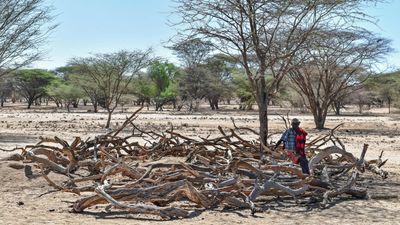UN Says Somalia Is Facing Its Worst Famine in Years
According to the United Nations, Somalian children are currently being admitted for medical treatment for malnutrition every minute in the East African country.
The United Nations recently shared that Somalia is facing severe famine. And, as a result, the organization will be setting a new target of over $2 billion in funding needed to tackle the issue. The UN says that Somalia has not experienced a famine of this magnitude in over half a century.
In a conversation with reporters, James Elder, a UNICEF spokesperson, said that the situation is dire and is showing no sign of getting better in the near future.
"Things are bad, and every sign indicates that they are going to get worse. Without greater action and investment, we are facing the death of children on a scale not seen in half a century," Elder said.
Earlier this year, Elder spoke to the media about the growing concerns of Somali children suffering from malnutrition.
Earlier reports noted that about 500,000 Somali children under the age of five were expected to experience extreme levels of malnutrition and face the risk of death. Elder also said that nutritional resources centers across Somalia were already at their maximum capacity and could not accommodate more children.
"We've got more than half a million children facing preventable death. It's a pending nightmare," said Elder at the time, during a Geneva news briefing. "You've got critically ill children who, without treatment, may die in a matter of hours."
Following a string of consecutive failed rainy seasons, crops and livestock have been adversely affected, and this has thrown the country further into the depths of extreme hunger.
Elder saidElder said that although Somalia has faced similar hardships in the past, this is beyond what happened in the past.
"When people speak of the crisis facing Somalia today, it has become common for frightful comparisons to be made with the famine of 2011 when 260,000 people died," Elder said. "However, everything I am hearing on the ground — from nutritionists to pastoralists — is that things today actually look worse. In 2011, after three failed rains, the affected population was half of what it is now, and the overall conditions — rain and harvest — were on the mend. Today, it's been four failed rains, the forecast for the fifth rains is looking pretty grim, and the affected population is twice the size of 2011."
- The Lost Songs From Somalia's Golden Age of Music Are Compiled ... ›
- Aug 19: DRC-M23 Peace Talks, Somalia Diphtheria, ADF Kills 52 | OkayAfrica ›
